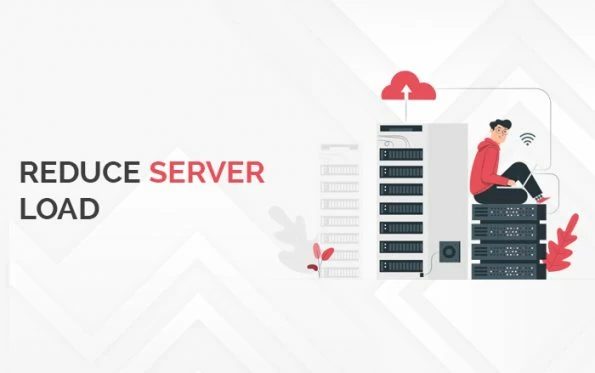
Table of Contents
Reducing server load is crucial for improving a website’s speed, reliability, and user experience. High server load can lead to slow performance, downtime, or even crashes, so it’s essential to identify the causes and optimize accordingly. Here are several effective strategies:
1. Optimize Website Code and Database Queries
- Minify and Compress Code: Reduce file sizes by minifying HTML, CSS, and JavaScript files. Tools like UglifyJS (for JavaScript) or CSSNano (for CSS) help compress code.
- Optimize Database Queries: Review and refine SQL queries to prevent excessive load times. Remove unused or redundant queries, optimize indexes, and limit heavy operations.
- Use Lazy Loading: Only load images or media when they appear on the user’s screen, which reduces the initial server load.
2. Use Caching
- Browser Caching: Set caching rules in your
.htaccessfile to cache resources locally in users’ browsers, reducing server requests. - Server-Side Caching: Implement caching solutions like Redis, Memcached, or Varnish to store frequently accessed data and reduce the load on the database.
- Content Management System (CMS) Caching: If you use a CMS (like WordPress), enable caching plugins such as WP Super Cache or W3 Total Cache.
3. Use a Content Delivery Network (CDN)
- A CDN distributes website content across a network of servers worldwide. It reduces server load by caching and delivering static content (images, CSS, JavaScript) from the closest CDN server to the user’s location, improving load times and performance.
4. Optimize Images and Media
- Resize and Compress Images: Use tools like TinyPNG or JPEG-Optimizer to compress images. WebP is a format that’s smaller and optimized for web use.
- Use Lazy Loading for Images and Videos: Only load media as users scroll to them, reducing initial server load.
5. Limit Background Processes and Cron Jobs
- Optimize Cron Jobs: Schedule cron jobs for off-peak hours and limit the frequency of resource-intensive tasks.
- Disable Unnecessary Processes: Disable or reduce the frequency of background processes that consume server resources.
6. Upgrade to Better Hosting Resources
- Upgrade Hosting Plan: If you’re on a shared hosting plan, consider upgrading to a VPS, dedicated server, or cloud hosting to ensure more CPU, RAM, and storage capacity.
- Increase Server Resources: Adding resources (like RAM and CPU) can help handle higher loads if the server hardware is upgradable.
7. Use Load Balancing
- For high-traffic websites, use load balancing to distribute incoming traffic across multiple servers, reducing individual server load and improving availability.
8. Optimize and Reduce HTTP Requests
- Combine CSS and JavaScript Files: Combining multiple CSS and JS files into one reduces HTTP requests.
- Use Sprites: Combine images into a single sprite file to reduce the number of HTTP requests.
9. Disable Unused Modules or Plugins
- Disable Unnecessary Plugins: Unused plugins in CMSs like WordPress can add to server load. Disable or delete any plugins you don’t use.
- Limit WordPress Plugins: Only use necessary plugins; each plugin adds to the server’s processing load.
10. Set Up GZIP Compression
- Enable GZIP compression on your server to reduce the size of HTML, CSS, and JavaScript files before they’re sent to the browser, improving load times and reducing server load.
11. Monitor and Manage Server Logs
- Excessive logging can consume resources. Check error logs for issues and resolve them quickly to prevent ongoing issues from overloading the server.
12. Implement Database Indexing
- Indexing helps speed up database queries by making frequently searched data faster to retrieve. Properly indexed databases reduce CPU load and speed up responses.
13. Monitor and Track Server Performance
- Use monitoring tools like New Relic, Nagios, or Zabbix to get insights into server performance. These tools help identify bottlenecks and provide data for optimization.
Summary Table
| Action | Description |
|---|---|
| Optimize Code & Queries | Minify code, optimize SQL queries |
| Enable Caching | Browser, server-side, CMS caching |
| Use CDN | Offload static content delivery |
| Compress Media | Compress images, use lazy loading |
| Manage Background Processes | Optimize cron jobs, disable unnecessary processes |
| Upgrade Hosting | Consider VPS or dedicated hosting |
| Load Balancing | Distribute traffic across multiple servers |
| Reduce HTTP Requests | Combine files, use sprites |
| Disable Unused Plugins | Remove unnecessary plugins and modules |
| Enable GZIP Compression | Reduce file sizes for faster delivery |
| Monitor Server Performance | Track performance and resource use |
By implementing these strategies, you can effectively reduce server load, improve website speed, and ensure a better experience for users and more efficient resource management.